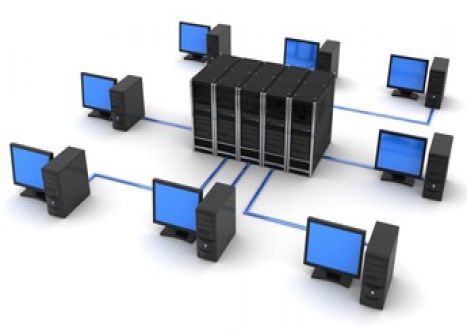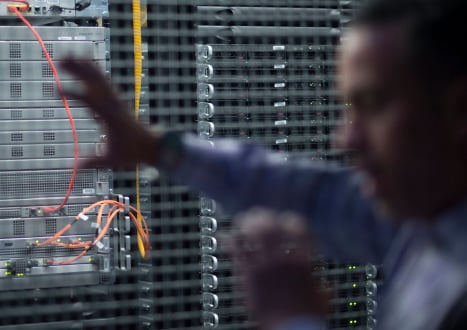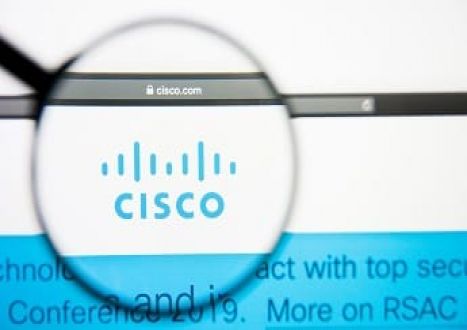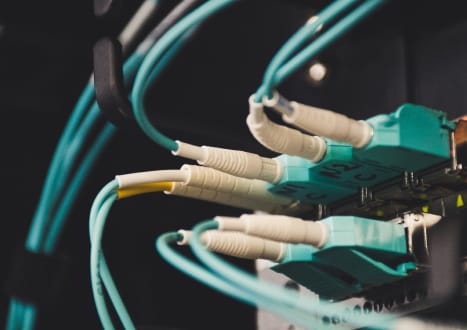- Home
- Video Courses
- Certifications
- 300-410: Implementing Cisco Enterprise Advanced Routing and Services (ENARSI) Dumps


300-410: Implementing Cisco Enterprise Advanced Routing and Services (ENARSI) Certification Video Training Course
300-410: Implementing Cisco Enterprise Advanced Routing and Services (ENARSI) Certification Video Training Course includes 129 Lectures which proven in-depth knowledge on all key concepts of the exam. Pass your exam easily and learn everything you need with our 300-410: Implementing Cisco Enterprise Advanced Routing and Services (ENARSI) Certification Training Video Course.
Curriculum for Cisco CCNP Enterprise 300-410 Certification Video Training Course


































300-410: Implementing Cisco Enterprise Advanced Routing and Services (ENARSI) Certification Video Training Course Info:
The Complete Course from ExamCollection industry leading experts to help you prepare and provides the full 360 solution for self prep including 300-410: Implementing Cisco Enterprise Advanced Routing and Services (ENARSI) Certification Video Training Course, Practice Test Questions and Answers, Study Guide & Exam Dumps.
CCNP ENARSI (300-410) : BGP (BORDER GATEWAY PROTOCOL)
1. 7_1 BGP Basics And Applications
In this section, we are going to talk about PGP basics and applications. Running protocols are basically divided into two types: IGP and EGP. As you may have guessed from the name, IGP are the protocols used within the internal network, whereas EGP is a generic term for the protocols used between networks within networks, or between different autonomous systems. Border Gateway Protocol BGP is also an EGP. As working mechanisms, BGP differs significantly from IGProuting protocols. IGPs use criteria called metrics to reach a target network from one point to another. For example, Rip uses the metrichop to count OSPF and EIGRP. First try to find the fastest line and prefer that path by taking a look at the bandwidth delay or something like that. Unlike BGP, it's a policy-based routing protocol that allows you to control traffic flow using many different features. The main purpose of PGP is to perform routing between different autonomous systems without a loop. As you can see in our figure, we have two autonomous systems, and if you want to share the route between these two autonomous systems, we can use BGP. Many different perimeters can be used for BGPPet selection, but if none of these permittersare configured, BGP behaves like rep and decideon the number of hops passed. The hop count is a number in the terminology of BGP. So let's say that each ISP has adifferent autonomous number as four and as five. Let's say that if HQ wants to reach Branch and if I don't configure any BGP attributes, the thing I'm going to just look at is the AS number that I am passing. So the route will be in that direction because I'm just passing ISP 4 and ISP 5. I'm passing two ISPs, but in this direction I'm passing three ISPs, so this rod will be preferred. All right, let's take a look at the tables that we are using in BGP. We have BGP table neighbours for table entry routing. The table below consists of all BGP configured neighbors, and please keep in mind that neighbours are configured manually on BGP. The BGP table contains all BGP rods, and this table can be very, very large sometimes. And the routing table contains the best paths for the destination networks, as happened on the other protocols. And lastly, we are going to focus on the BGP message types. The first message is open. After the neighbor's router is recognized It wants to initiate the neighbourhood by sending the router an open message. With this message, the two routers start the BGP peering, and the second message type is "Keep alive." Two peers periodically send this message to each other. A keepalive message is sent every 62nd, and with this message, the BGP neighbourhood remains active. And we have an update message with routing information sent between two neighbours, two peer routers, and network information contained in this update message. And we have, lastly, a notification message, which is a message sent by peer growers when there's a problem with the notification message. The neighbourhood BJP peer is over.
2. 7_2 Basic BGP Configuration
In this section, we are going to take a look at the basic BGP configuration. The BGP adjacencies can be within the same autonomy system or between different ones. Neighbors in the same neighbourhood are called IBGP neighbors, and neighbours in different autonomous systems are called EvGP neighbors. In BGP, neighbours do not have to be directly connected. As you can see in our figure, we have an IBGP neighbourhood between these numbers with Rodgers 1, 2, and 3. These are the IBGP neighbors, and these two routers can perform an EvGP peering because they belong to different autonomous system numbers.The EVGP neighbours are usually directly connected to each other. And the EvGP allows switching between different autonomous systems. A TCP session is established between the routers before the rod exchange. And as you can see, here we have three autonomous stems and routers. CNX can perform an EBGP neighborhood, and ratherDNY can perform an EBGP adjacency as well. And let's take a look at the IBGP adjacency. IBGP neighbours allow route exchange within the same autonomous stem, and a TCP session is established between the routers before the route change. Before the BGP configuration, neighbouring routers configured with the neighborand command must be able to access each other before the BGP configuration.And an IGP is usually used for this. And here we have an we can make an IBGP peeringbetween, for example, rather A and B as well as Cto provide an IBGP peering between A and C. They should reach each other. Okay? That means we can use an OSPF, we can use an EIGRP, or something like that. We can use a static route. The only thing we need to focus on is how these guys should reach each other before exchanging the BGP and IBGP routing updates. And here are the steps of the BGP adjacency: They are idle. Connect, open, send conformation, and set idle. The router queries the routing table to see if there is a route to reach the neighbour in the idle step. In the connect step, the router has found a route to reach the neighbor, and the three-way handshake has been completed in the open send. A login request has been sent to start a BGP session in the open; confirm the router acknowledged the parameters required to accept the BGP session, otherwise the router switched to the active state established in the open; confirm the router acknowledged the perimeters required to accept the PGP session. Otherwise, the router switches to the active state, and in the established state, the neighbourhood is established when routing starts. And here is the configuration of the PGP. We have five routers in here, or rather, 1234 and five. The first thing we're going to focus on is EBGP configuration. Router four and router five can become an EBGP, as you can see. Okay? And to provide this adjacency between these two routers, what we're going to use is these IP addresses, which are wrong. Okay? This is going to be four, and this is going to be five. Okay, on rather five, we're going to define a rather BGP and autonomous number command first. And in router 4, we are doing the same thing with BGP and the BGP autonomous system that the router belongs to itself. Okay, then we are defining aneighbor statement between each other. We are using neighbour ten144, which is router four, and removing the as and as number that router four belongs to with router five. And in router 4, what we are using is a neighbour statement. Again, that's the IP address of the routerFive and we are defining a remote aswhich router five belongs to and that's it. Instead of four or five routers, these commands are sufficient to provide EVGP neighbour ship EVGP peering between two routers. But EVGP neighbours must be directly connected. But if I want to make appearing between the loopaddresses of this EBGP peering peers rather Four and Five,I need to use the neighbour IP address and Evgpmultihop to comment for these two routers. Okay, when I try to peer between these lines, it works fine, but if I want these guys to peer from our loop X, I need to use the EBGP multihop command because the Ebjp app peering should be made directly connected. Okay, I'm using the EBGP multihop command, or do I always need to peer the loopback IP addresses? Many times, no. On ABGB, we are just peering with our interface addresses normally. But you can face this question on the CCMP exam, and the answer is the ABGP multilep. Okay, let's take a look at the IBGP configuration in this step. Okay, we've done more BGP and autonomous numbering here. We are going to try to make appearingwithin router one and router four and IBGPpeers do not have to be directly connected. Please keep in mind that there's no problem if they are not directly connected. Okay, what I'm doing is defining a neighborstatement neighbour one, which is the loopback IP address of the router one again. And I'm defining neighbour 4444 forthe rather one as a neighbor. And we are using a remote as number ofthe same as in here, as you can see. Okay, but commands in configuration two are not enough to establish neighbourhoods in the same autonomous systems, overlooking back, because Rodr four can send packets to Rodr one from this direction or from that direction, as you can see. Rather, the neighbouring loopback with the IP address 4444 is known. For this reason we need to use update sourceloopback command for the Ivgp peering over the loopbacks. For example, I need to type "to another neighbor" Update source loop Zero." And the same configuration must be made on 42 neighbours at a time with a loopback zero update source. Okay, that's the IBGP peering over Loopback, and let's take a look at the BGP configuration. Right now, let's try to advertise the BGP route using the network command. You can advertise the BGP routes with two options. The first one is the network command, and the second one is redistribution. We'll look at the network command in this section, and we'll check to redistribute in this section. All right, in the first configuration, we are doing the same thing on router five. Okay? Rather, BGP and an autonomous team number And as you can see here locally, the networks behind this guy are 500 0/124 and 201 12602 one.All right, here is my network that I need to advertise. But if I use this tank network, 500zero, only this one is preferred because it will advertise all 50s on the Internet. What we gonna use for this configuration, what we needto use is network 51 10 and mask 255-255-2550 command. That's the who command. We don't prefer this one, guys. We are using network, network number, and mask keywords and this subnet mask. That's the cool thing. Secondly, let's try to advertise the route using redistribution in configuration. Steps three and four describe this. Let's do this. We don't want to advertise these guys, but I'm going to advertise Five and Six from the PGP. Okay? Let's advertise these prefixes and let's donot advertise the fifth, zero and 60. Okay? As you can see that I define accesslist in here which hitting the 1234 networks. Then I'm permitting all other routes. Then in the route map, I'm matching this IP address, which covers one, two, three, and four networks. Then I'm going under the BGP and typing "redistribute connected" and "rot map filter," which means to send the PS IP addresses to the BGP domain. Alright, let's see how we can x-mine the BGP table for the command, "Show IpVgp." In this section, you can see a star value, and a star greater than the value indicates that this rod is valid. Okay? I can install this rod in my routing table. The fact that it's greater than volume means that's the best path. Okay? For example, let's take a look at this route. I'm learning this route from here and here, and okay, here and here. But this one is valid, and the lesson I'm learning from this path is So I can use the Show Ipbgp summary command as well to take a look at the neighbors. BGP neighbors. We can check the neighbour table by using the Show IPBGPSummary option, and we can take a look at our PGP neighbors. These are the IP addresses of our neighbors; these are the autonomous systems of our neighbors; and these are the times showing how long the session has been up; and these are the numbers of the prefixes that we are sharing with our neighbors. If I don't use any network or redistribute statements here, this would be zero. Okay, let's finally discuss the next observed VGP change the next hop and advertised router. But an IDGP peer does not change the next-to-top address on the advertised router. All right? For example, router 5 makes the next stop itself while sending the routes. However, while advertising to router one, router four does not change the nexthop. As a result, we must use the next hop sales command to find a solution. And here's the user of the command "neighbour onethe basic BGP configuration. The BGP adjacencies can be within the same autonomy system or between different ones. Neighbors in the same neighbourhood are called IBGP neighbors, and neighbours in different autonomous systems are called EvGP neighbors. In BGP, neighbours do not have to be directly connected. As you can see in our figure, we have an IBGP neighbourhood between these numbers with Rodgers 1, 2, and 3. These are the IBGP neighbors, and these two routers can perform an EvGP peering because they belong to different autonomous systems. The EVGP neighbours are usually directly connected to each other. And the EvGP allows switching between different autonomous systems. A TCP session is established between the routers before the rod exchange. And as you can see, here we have three autonomous stems and routers. CNX can perform an EBGP neighborhood, and ratherDNY can perform an EBGP adjacency as well. And let's take a look at the IBGP adjacency. IBGP neighbours allow route exchange within the same autonomous stem, and a TCP session is established between the routers before the route change. Before the BGP configuration, neighbouring routers configured with the neighborand command must be able to access each other. And an IGP is usually used for this. And here we have an we can make an IBGP peeringbetween, for example, rather A and B as well as Cto provide an IBGP peering between A and C. They should reach each other. Okay? That means we can use an OSPF, we can use an EIGRP, or something like that. We can use a static route. The only thing we need to focus on is how these guys should reach each other before exchanging the BGP and IBGP routing updates. And here are the steps of the BGP adjacency: They are idle. Connect, open, send conform, and establish idle. The router queries the routing table to see if there is a route to reach the neighbour in the idle step. In the connect step, the router has found a route to reach the neighbor, and the three-way handshake has been completed in the open send. A login request has been sent to start a BGP session in the open; confirm the router acknowledged the parameters required to accept the BGP session, otherwise the router switched to the active state established in the open; confirm the router acknowledged the perimeters required to accept the PGP session. Otherwise, the router switches to the active state, and in the established state, the neighbourhood is established when routing starts. And here is the configuration of the PGP. We have five routers in here, or rather, 1234 and five. The first thing we're going to focus on is EBGP configuration. Router four and router five can become an EBGP, as you can see. Okay? And to provide this adjacency between these two routers, what we're going to use is these IP addresses, which are wrong. Okay? This is going to be four, and this is going to be five. Alright, what we're going to do is on rather five, we are defining a rather BGP and autonomous number command first. And in router 4, we are doing the same thing with BGP and the BGP autonomous system that the router belongs to itself. Okay, then we are defining aneighbor statement between each other. With the router five, we are using neighbour ten144, which is the router four, and removing the as and the as number that router four belongs to. And in router 4, what we are using is a neighbour statement. Again, that's the IP address of the routerFive and we are defining a remote aswhich router five belongs to and that's it. These commands are enough to provide an EVGP neighbour ship EVGP peering between two routers rather than four or five. But EVGP neighbours must be directly connected. But if I want to make appearing between the loopaddresses of this EBGP peering peers rather Four and Five,I need to use the neighbour IP address and Evgpmultihop to comment for these two routers. Okay, it's okay when I try to make peering between this line, but if I want to make these guys peer from our loop X, I need to use the EBGP multihop command because the Ebjp app peering should be made directly connected. Okay, I'm using the EBGP multihop command, or do I always need to peer the loopback IP addresses? Many times, no. On ABGB, we are just peering with our interface addresses normally. But you can face this question on the CCMP exam, and the answer is the ABGP multilep. Okay, let's take a look at the IBGP configuration in this step. Okay, what we have done here is rather BGP and autonomous numbering. We are going to try to make appearingwithin router one and router four and IBGPpeers do not have to be directly connected. Please keep in mind that there's no problem if they are not directly connected. Okay, what I'm doing is defining a neighborstatement neighbour one, which is the loopback IP address of the router one again. And I'm defining neighbour 4444 forthe rather one as a neighbor. And we are using a remote as number ofthe same as in here, as you can see. Okay, but commands in configuration two are not enough to establish neighbourhoods in the same autonomous systems, overlooking back, because Rodr four can send packets to Rodr one from this direction or from that direction, as you can see. Rather, one knows the neighbouring loopback with the IP address 4444. For this reason we need to use update sourceloopback command for the Ivgp peering over the loopbacks. For example, I need to type "to another neighbor" and "Update source loop Zero." And the same configuration must be made on rather 42 neighbours at a time with an update source of loopback zero. Okay, that's the IBGP peering over Loopback, and let's take a look at the BGP configuration. Right now, let's try to advertise the BGP route using the network command. You can advertise the BGP routes with two options. The first one is the network command, and the second one is redistribution. In here, we are going to take a look at the network command, and in here, we are going to check to redistribute. All right, in the first configuration, we are doing the same thing on router five. Okay? Rather, BGP and an autonomous team number And as you can see here locally, the networks behind this guy are 500 0/124 and 201 12602. All right, here is my network that I need to advertise. But if I use this tank network, 500zero, only this one is preferred because it will advertise all 50s on the Internet. What we gonna use for this configuration, what we needto use is network 51 10 and mask 255-255-2550 command. That's the who command. We don't prefer this one, guys. We are using network, network number, and mask keywords and this subnet mask. That's the cool thing. Secondly, let's try to advertise the route using redistribution in configuration. Steps three and four describe this. Let's do this. We don't want to advertise these guys, but I'm going to advertise Five and Six from the PGP. Okay? Let's advertise these prefixes and let's donot advertise the fifth, zero and 60. Okay? As you can see that I define accesslist in here which hitting the 1234 networks. Then I'm permitting all other routes. Then in the route map, I'm matching this IP address, which covers one, two, three, and four networks. Then I'm going under the BGP and typing "redistribute connected" and "rot map filter," which means to send the PS IP addresses to the BGP domain. Alright, let's see how we can x-mine the BGP table for the command, "Show IpVgp." In here, you can see a star value, and a greater than value star means this rod is valid. Okay? I can install this rod in my routing table. The fact that it's greater than volume means that's the best path. Okay? For example, let's take a look at this route. I'm learning this route from here and here, and okay, here and here. But this one is valid, and the lesson I'm learning from this path is So I can use the Show Ipbgp summary command as well to take a look at the neighbors. BGP neighbors. We can check the neighbour table by using the Show IPBGPSummary option, and we can take a look at our PGP neighbors. These are the IP addresses of our neighbors; these are the autonomous systems of our neighbors; and these are the times showing how long the session has been up; and these are the numbers of the prefixes that we are sharing with our neighbors. If I don't use any network or redistribute statements here, this would be zero. Just okay, let's lastly talk about the next observed VGP change the next hop and advertised router. But an IDGP peer does not change the next-to-top address on the advertised router. All right? For example, router 5 makes the next stop itself while sending the routes. But router four does not change the nexthop while it's advertising to router one. So for solution, we need to use the next hop sales command. And here's the user of the command "neighbor one." And next hop yourself.
3. LAB - BGP Neighbor Configuration
Alright guys, that's the lap time. We are going to take a look at the BGP neighbour configuration together. So we have two steps to accomplish: In the first step for topology above, we need to perform neighbours between routers 4 and 5, rather than 5 and 6, over loopbacks and without and without looAs you can see, these guys are EVGP, right? because they are in different autonomous systems. In the second fourth topology shown above, we must perform neighbourhoods rather than one and four wire loopbacks. Okay? This guy has a loopback, one on one, I think. And this guy has a loopback of four, and we need to peer them via IBGP this time because they are in the same autonomous system. Okay, what I'm gonna do firstly in the question isto activate an IGP to provide IBGP connection, okay? As I told you in the slides, we need an IGP, or we need to define a static route or something like that, because before configuring an IB GP, we need to provide the reachability between our routers. All right? So, let us define the OSPF in terms of autonomy stems. Alright. brief router ID network. Let's jump to the other guy's network area zero and network 24. Let's go to router SPF 1, router ID 30 network, and 13. Okay, rather than OSPF one routerID, network CL and occasionally advertiser loopback are driving me insane. Okay, I finished configuring OSPF in the autonomous system and moved on to the next step. We must now perform a neighbour ship between rather one and four using their look back. Okay? They are in the same autonomous system, as you can see. Let's go to one and four, and I'll be in another. Let's try the pink first. If I get the loop back up and running, I should be able to do so fairly quickly because, as you can see from the IGP from the IGP that I configured, OSPF is carrying me. All right, now I can configure IBGP ratherBGP and as number neighbour four four fourisn't the remote as of 5500 and neighbor. When I'm neighbouring 4444, I'm sourcing my loopback. Okay, to define the neighbourhood from the loopback, we need to use the update source loopback command. All right, I'm in Router 4. Then I'll define the neighbour statements: this time one to one in remote s of 5500 and one to one update source loop zero. When I'm neighbouring with this guy, I'm sourcing my loopex row, which is an IP address. All right, let's see if I can provide PGP adjacency between these two guys. Okay, I'm waiting. And yes, as you can see, the PGP is converging a little bit slower when you compare it with the OSPF or AIGP. But we got PGP adjacency with one oneone, and I can check the show IPBG summary, see my neighbor, and see the timers all at the same time. All right, this second step is accomplished. Let's take a look at the first step now for topology and behaviour in the neighbourhood between four and five this time. Okay, I'm going to EPG-peer these guys. Firstly, using without loopback Then I'm going to show you what you should do to peer with others. All right, router four, router BGP, neighbour five, and remote as in 6500, right? Okay, let's go to fifth base. Oh, what am I doing, neighbor? I'm removing 55000 kB. That should be enough to peer because I'm trying to establish EBGP peering. All right, that's cool. I haven't configured anything. I just configured a neighbour and removed Sstatement, as you can see, from peering from the direct interfaces connected to each other. Okay, I have peering using these IP addresses, and I have peering with the rather distant and rather distant. If I want to make a neighbour from their loop, I say what I need to configure is for EBGP this time and I should use the EBGP multihop command. Okay, actually, EBGP peers should be directly connected. As you can see here, these interfaces are directly connected, but my loopback interfaces are not directly connected, as you can see. So I need to use the ABJP multihop command. Also, what I need to configure is a static route between router four and router five to provide communication between four, four, and five five five.All right, let's go. IP route 2555, send the packet to this guy, and let's do it in the reverse direction. Then I'm getting into the PGP statement and what I should define in here as multihop two. But I just need to define it first. Neighbor four four four removes as, and EBGP multiplies by two this time. And I need to make the same configuration here. Neighbor five five in a remote island, and neighbour two with ebgihop. All right, guys, as you can see, I configured all the steps and showed you how I become adjacent, how I become visible from the loopbacks or from the direct information interfaces in EBGP. And I showed you how we can make peers from our loopbacks in the IBG. So I can use the ticket here as well. Okay, guys, we are coming to the end of this session too. And thanks for viewing.
4. 7_3 BGP Attributes and Best Path Selection
In this section we are going to talk about BGP attributes and the best path selection. BJP is one of the most important protocols for connecting different autonomous systems. Routing protocols use various algorithms to find the best way to the target network. PGP finds the best way to use PGP attribute parameters. For example, RIP uses the hopkam to find the best way, and OSPF uses the cost value for the metric calculation. However, the metric computation of BGP is not as easy as these protocols. BGP attributes are the way to label incoming or outgoing BGP routes. While some features are supported by all vendors, some are only specific to certain vendors. Some features are not traversed, while othersare traversed from one another to another. And here are the well-known BGP attributes. The mandatory features are the features that must be included in VGP update methods. The Aspat feature shows the number of autonomous systems to be traversed while reaching the target network. Less as pets are always preferred. The next feature specifies the next router to be traversed to the destination origin and specifies how BGP learns the route with IGP or EGP or in other forms with an unknown origin. Local preference is used to determine the output from the local autonomic systems; a higher local preference volume is always preferred, and atomic aggregate is used for routes created with rod summarization. And here are the optional BGP attributes, and they are The aggregator, which defines the router that performs route summarization in the autonomous stem community, ensures that BGP parameters are applied at the group level and is set to low if it is designed by Arab packets at the priority. And the last optional BGP attribute Cisco per priority weight." It's defined locally on the router and is specific to the router, and higher weight volume is always preferred. And here is the BGP's bestpath calculation, step by step. The first BGP is rather loose on the number one. Number one saying that reject the rodsthat come from inaccessible next up, addressfor the BGP Pest Pet calculation. If I'm learning a rod at an inaccessible next stop, this rod is rejected. Second, choose the highest weight; that's the Cisco proprietary value, as I said. For example, choose the rods coming from rodger two instead of rodger three if weight is configured at a higher value on router two. Third, choose the highest local preference value. Okay. Fourth, if there's a route created by network command, choose it. and five, choose the shortest S path. And we have a few more steps too, but I'mnot going to talk about them because normally the tieis broken with these five steps, and normally that's goingto be enough if you know just these five steps.
Student Feedback
Download Free Cisco CCNP Enterprise 300-410 Practice Test Questions, Cisco CCNP Enterprise 300-410 Exam Dumps
| File | Votes | Size | Last Comment |
|---|---|---|---|
| Cisco.test-king.300-410.v2024-04-29.by.isabelle.85q.vce | 1 | 4.8 MB | |
| Cisco.selftestengine.300-410.v2020-04-23.by.elliott.114q.vce | 3 | 4.95 MB | Oct 05, 2020 |
Similar Cisco Video Courses























































Only Registered Members Can Download VCE Files or View Training Courses
Please fill out your email address below in order to Download VCE files or view Training Courses. Registration is Free and Easy - you simply need to provide an email address.
- Trusted By 1.2M IT Certification Candidates Every Month
- VCE Files Simulate Real Exam Environment
- Instant Download After Registration.
Log into your ExamCollection Account
Please Log In to download VCE file or view Training Course
Only registered Examcollection.com members can download vce files or view training courses.





Add Comments
Feel Free to Post Your Comments About EamCollection's Cisco CCNP Enterprise 300-410 Certification Video Training Course which Include Cisco 300-410 Exam Dumps, Practice Test Questions & Answers.